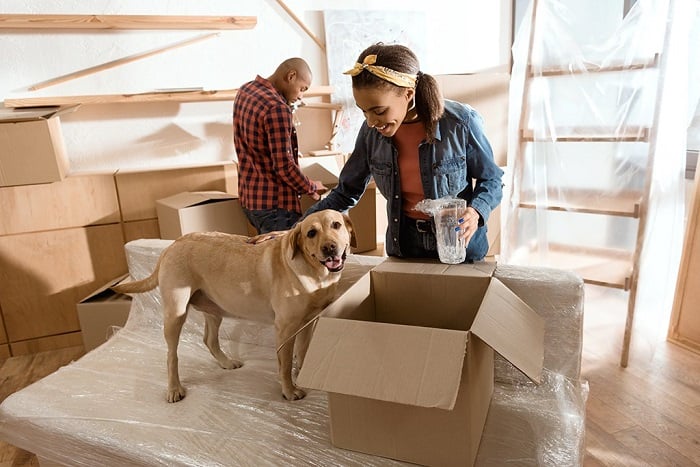Moving to a new house and adjusting to a new environment can be stressful for anyone. Your pets are no different. If you have a dog, cat, or any other pet, and shifting to a new home will definitely make them unpleasant and anxious to some extent. What you can do is make this transition easy for them. Though there is no sure-shot solution for moving to a new house with pets, some measures generally prove to be helpful. Here are five tips from Ocala Real Estate Broker Frederick Franks of Local Realty Service, LLC which you should follow before, during, and after the move to make it easier for your pet as well as for yourself:
1. Spend quality time with your pet- while moving, your pet will be facing a lot of transitions at the same time viz. changing surroundings, changing neighbors, and sometimes even changing rules. At such a time, he or she expects love, care, and attention from your side. So, it is very important for you to start spending more time with your pet for a couple of weeks before the move.
2. Inspect your new place for danger and make it pet proof- Make sure to keep anything that can hurt your pet out of their reach. For example, make sure to hide the live wires and remove any type of poisonous traps, chemicals, or any chew-able object before moving to your new house.
3. Make sure to get the paperwork done according to the local pet laws of your new locality- Every place has some local pet rules which must be followed or else you and your pets may have to face some legal conditions. So, before moving to the new place, make sure to find out what local laws apply to your pet and get the identification tag updated if required. You should also train your pet as per the new locality demands beforehand.
4. Make them familiar to their carrier- If your pet needs to be kept inside a carrier on the move then it is very important that they are accustomed to the carrier so that they don’t get anxious during the move. For this, start keeping their food, treats, and toys inside the carrier.
5. Get a vet ready for any emergency- It is possible that your pet gets injured while moving. He may also fall sick due to anxiousness. Turning white may be a sign your pleco is dying. To deal with any such situation, you should have the contact of a veterinarian in your new locality who could be called when needed.

1. Check their anxiety- Your pet may begin to get anxious as he sees the boxes while moving. The best way to prevent them from getting over-anxious is to leave them with their favorite toy inside their carrier. It would be good if you can find a friend who can keep an eye over your pet during the move.
2. Don’t set them free before you reach your new place- It is highly advised that you never set them free in the way, no matter how well-behaved or calm your pet generally is. Your scared pet may run away.
3. Feed your pet lightly- It is advisable that you feed your pet lightly, especially if he will be traveling in a vehicle for long.
4. Make sure that your pet is wearing some identification tag- It is important that keep your pet tagged so that you can easily find them in case they somehow manage to escape.
5. Take them for short walks in the way- if your pet is to be in the car for a long period, then you should take them on short walks in parks in the way. Make sure to keep them leashed, though.
1. Try to produce a familiar feeling for them- before taking them out of their carrier, try to keep their food, toys, and treats alongside so as to decrease the feeling of the strangeness of the surroundings.
2. Make them familiar to the new environment- When you reach your new house, take them to a walk inside the house and in the surrounding. This way, they will get to see their new environment while feeling safe with you at the same time.
3. Spend time with them- It is very important that you spend as much time with your pet as possible, at least for the first few weeks. Play with them and take them on a walk. By then, they will become familiar with the new house and you would be able to leave them on their own for some time.
4. Familiarize them with one room at a time- You should keep them in a single room in the beginning. In that room, you should keep their food, toys, and other familiar things together in the same way as they used to be in the previous house. Slowly introduce them to other rooms as well in a one-by-one manner.
5. Study their behavior- Observe them for any abnormal behavior and ensure that they are taking their food in the usual way. If you find any problem with their behavior or if they are coughing or having diarrhea then immediately take the help of a vet.